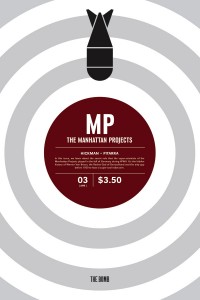 When I was 16 years old and a Junior in high school, I designed an atomic bomb. Y’know, for fun.
When I was 16 years old and a Junior in high school, I designed an atomic bomb. Y’know, for fun.
This was back in the mid-80s, so this was a big thing to try to do; these days, I’m pretty sure you can Google “How to build an atomic bomb” and get three different working designs, provided you don’t mind getting a particular red mark on a file with your name on it, and having to get your prostate tickled every time you go within 500 yards of an airport.
No, back then you needed to hit libraries and read every book you could get your hands on about the subject, from John McPhee’s The Curve of Binding Energy (Which I highly recommend, if only to scare the living shit out of you; the next time a politician tries to terrify you with ephemeral ideas about Soviet-bought dirty suitcase nukes, it’s easier to giggle at their ignorance when you know that you can make a dirty bomb with a pile of uranium, an ammunition press, a .44 handgun and a public toilet. I am not joking) to Richard Rhodes’s phonebook about the original Manhattan Project, The Making of The Atomic Bomb, which still sits proudly on my bookshelf.
I read everything I could get my hands on about the original Manhattan / Los Alamos project for clues on how one might build such a thing (I also asked my chemistry teacher how to synthesize hexamethelinetetramine in case I needed to make RDX high explosives, and I wasn’t referred to law enforcement, but what the hell; it was the 80s. We knew what freedom was then. Freedom and Aqua-Net). I was fascinated by these guys out in the desert, trying to build something that, for all they knew, would turn all the nitrogen in the atmosphere into plasma and make the Phoenix Force look like something that could be knocked down by Midol.
All of this is one hell of a long way to go to explain why, although I am generally not the biggest fan of Jonathan Hickman’s comics, I am totally digging his work on The Manhattan Projects.
 Podcast RSS Feed
Podcast RSS Feed iTunes
iTunes Google Play
Google Play Stitcher
Stitcher TuneIn Radio
TuneIn Radio Android
Android Miro Media Player
Miro Media Player Comics Podcast Network
Comics Podcast Network